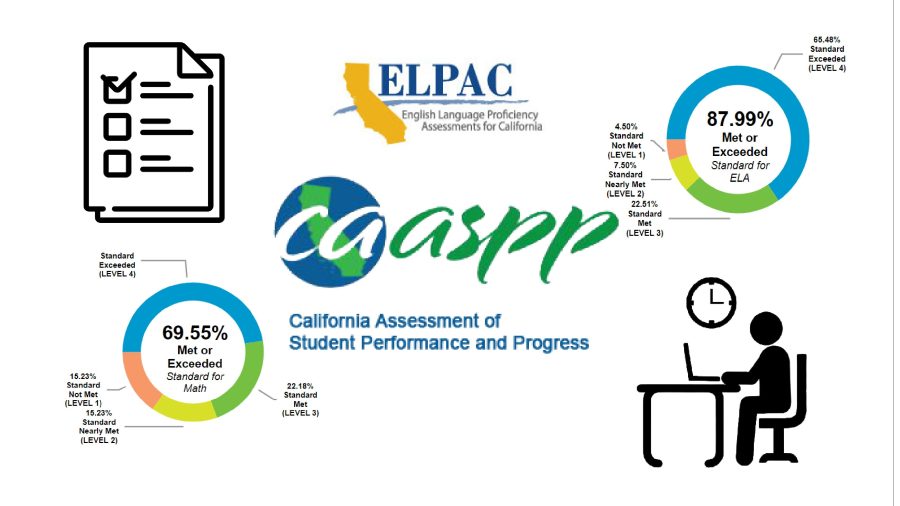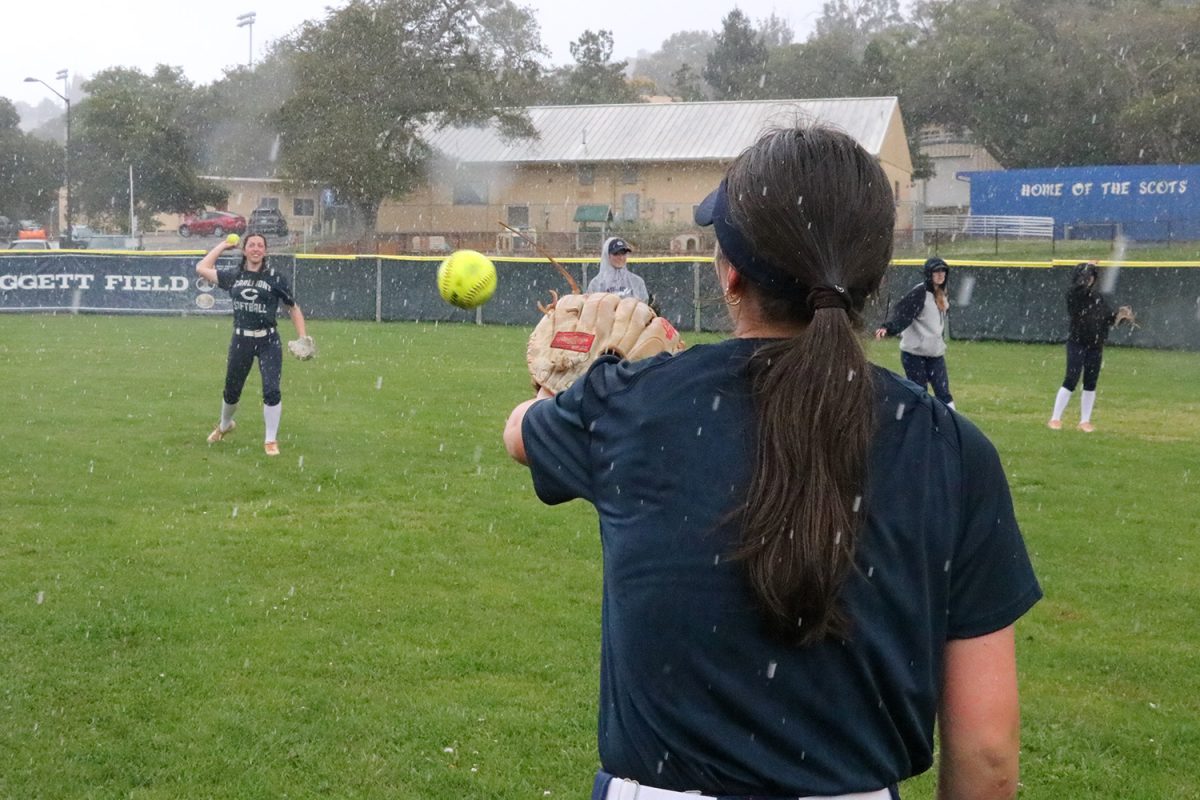The CAASPP and ELPAC tests are two of the three state tests that most juniors take during the spring. The third test not pictured above is the CAST test, which has to be taken by senior year, but not necessarily in concurrence with the other tests.
Almost all California juniors are required to take a variety of state tests, including the California Assessment of Student Performance and Progress (CAASPP) tests, the English Language Proficiency Assessment for California (ELPAC), and the California Science Test (CAST).
In March, Carlmont juniors had to arrive at school at the same time as a typical school day, 8;30 a.m., and would take the tests for two hours on four different occasions. The other grades would arrive after the juniors completed their testing, with everyone having three hour-long classes each testing day.
This year’s juniors had mixed feelings about the rigorous testing and confusing schedule.
“Some people, including myself, took it somewhat seriously. However, a lot of kids were like, ‘I just woke up in the morning. I want to end this test,’ but then some of those kids were like, ‘I really want to push myself to do well on the test,’” said Tyler Tirsell, a junior.
Despite some juniors’ nonchalant attitudes toward their scores, as they do not count toward their grades, teachers still consider their results. According to the CAASPP website, Carlmont has higher average scores than the state average for those who met or exceeded the standard for the past few years.
“We are always going to look at the results. In fact, there are usually staff development or department meetings that are devoted to that. Do I do it on my own? Not a lot, but we certainly look at how the students do,” Michael Skrable, a Carlmont math teacher, said.
California administers this state testing to ensure that the Common Core standards are being met and “to measure student progress toward college and career readiness,” according to the Smarter Balanced Summative Assessments fact sheet.
“The idea is that standardized testing is necessary for benchmarks and maintaining standards across public schools. There is a benefit in that we have a data point to compare student performance in relation to initiatives the school has tried,” said Carlmont Principal Gay Buckland-Murray.
While most students take the CAASPP and ELPAC tests, there are alternatives like the California Alternative Assessments (CAAs). In addition, there is an option for students to opt out of testing entirely with the permission of their guardians.
However, this can have adverse effects on the school.
“If the school does not test a specific percentage of students overall, and of specific subgroups, we lose funding,” Buckland-Murray said.
These standards also affect classroom curriculum.
“I make sure, for example, in honors geometry, that I look at the state standards. You have to make sure that you cover all the state standards, and sometimes those change a little bit. If they do, then I need to change the curriculum that gets covered,” Skrable said.
State testing and its results have broader implications for students, curricula, monitoring standards, and school funding.
“I know a lot of people are not fond of it, but I think that it gives a common ground for being able to compare, like the SAT does, what students are learning at one school versus another school. Otherwise, you can just have crazy grade inflation. People can give A’s for nothing,” Skrable said.












